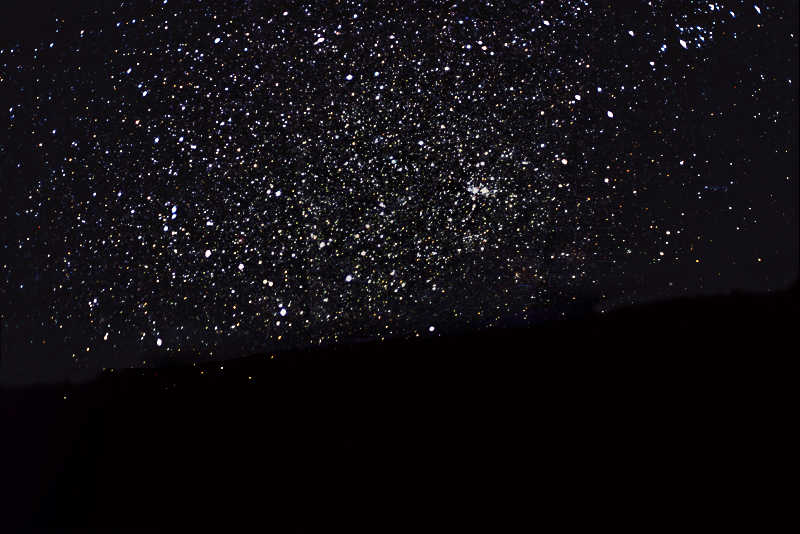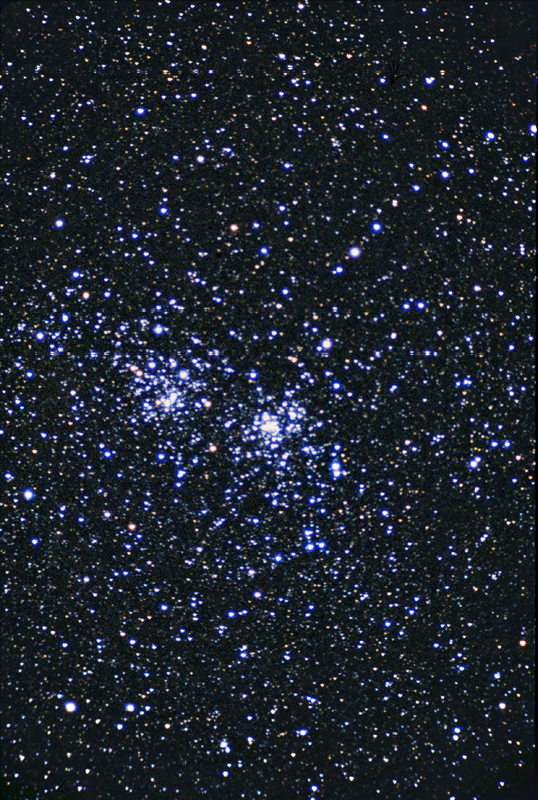
30 minutes exposure, Kodak Ektachrome 400 slide film.
50mm f/2 Canon camera.

From my home in Western Australia, the Double Cluster in Perseus is virtually an impossible object as it culminates only 2 degrees above the northern horizon. On one occassion I did manage to get a reasonable view when I journeyed to the north of the state, where it reached about 13 degrees altitude. However a true view had to wait until I moved to the USA.

In a widefield telescope, the clusters are quite impressive. NGC 869 is the more compact of the two, and has fewer bright orange giant stars. Almost all of the brighter stars are blue B-type main sequence stars. NGC 889, although composed mostly of B and A type stars, contains several orange giants, some of which are visible in the photograph.